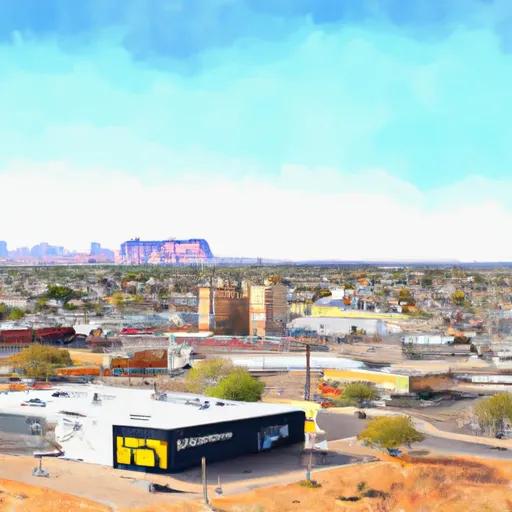-
 Snoflo Premium
Snoflo Premium
Get unlimited access to all our content
With no Ad interruptions! - Start Your Free Trial Login with existing account
Wittmann
Eden Index
Climate
8.0
•
Recreation
1.4
•
Community
•
Safeguard
3.7/10

Wittmann, Arizona is a small unincorporated community located in Maricopa County. The area experiences a desert climate, characterized by hot summers with temperatures often exceeding 100°F (38°C) and mild winters with daytime temperatures averaging in the 60s°F (around 15°C). The low annual rainfall, averaging around 9 inches, contributes to the arid conditions.
In terms of hydrology constituents, the region is primarily situated on desert terrain with limited water resources. The community relies on groundwater aquifers for its water supply, with some residents utilizing private wells.
Despite the arid environment, Wittmann and its surrounding areas offer various outdoor recreation opportunities. The nearby White Tank Mountain Regional Park provides hiking trails with beautiful views of the Sonoran Desert, as well as camping, picnicking, and wildlife observation. Residents and visitors can explore the desert scenery and enjoy activities such as horseback riding, biking, and off-roading. Additionally, the park hosts educational programs and events, making it an excellent destination for nature enthusiasts and families alike.
What is the Eden Index?
The Snoflo Eden Index serves as a comprehensive rating system for regions, evaluating their desirability through a holistic assessment of climate health, outdoor recreation opportunities, and natural disaster risk, acknowledging the profound impact of these factors on livability and well-being.
Climate Health Indicator (CHI): 8.0
Wittmann receives approximately
242mm of rain per year,
with humidity levels near 46%
and air temperatures averaging around
22°C.
Wittmann has a plant hardyness factor of
9, meaning
plants and agriculture in this region tend to thrive here all year round.
By considering the ideal temperature range, reliable water supplies, clean air, and stable seasonal rain or snowpacks, the Climate Health Indicator (CHI) underscores the significance of a healthy climate as the foundation for quality living.
A healthy climate is paramount for ensuring a high quality of life and livability in a region, fostering both physical well-being and environmental harmony. This can be characterized by ideal temperatures, reliable access to water supplies, clean air, and consistent seasonal rain or snowpacks.
Weather Forecast
Streamflow Conditions
Lower Gila-Agua Fria
Area Rivers
Lower Gila-Agua Fria
Snowpack Depths
Lower Gila-Agua Fria
Reservoir Storage Capacity
Lower Gila-Agua Fria
Groundwater Levels
Recreational Opportunity Index (ROI): 1.4
The Recreational Opportunity Index (ROI) recognizes the value of outdoor recreational options, such as parks, hiking trails, camping sites, and fishing spots, while acknowledging that climate plays a pivotal role in ensuring the comfort and consistency of these experiences.
Access to outdoor recreational opportunities, encompassing activities such as parks, hiking, camping, and fishing, is crucial for overall well-being, and the climate plays a pivotal role in enabling and enhancing these experiences, ensuring that individuals can engage in nature-based activities comfortably and consistently.
Camping Areas
| Campground | Campsites | Reservations | Toilets | Showers | Elevation |
|---|---|---|---|---|---|
| Constellation Park | 30 | 2,223 ft | |||
| Buckeye Hills Co Park | None | 949 ft | |||
| White Tank Mountain | 40 | 1,428 ft |
Nearby Ski Areas
Catastrophe Safeguard Index (CSI):
The Catastrophe Safeguard Index (CSI) recognizes that natural disaster risk, encompassing floods, fires, hurricanes, and tornadoes, can drastically affect safety and the overall appeal of an area.
The level of natural disaster risk in a region significantly affects safety and the overall livability, with climate change amplifying these risks by potentially increasing the frequency and intensity of events like floods, fires, hurricanes, and tornadoes, thereby posing substantial challenges to community resilience and well-being.
Community Resilience Indicator (CRI):
The Community Resilience Indicator (CRI) recognizes that education, healthcare, and socioeconomics are crucial to the well-being of a region. The CRI acknowledges the profound impact of these elements on residents' overall quality of life. By evaluating educational resources, healthcare accessibility, and economic inclusivity, the index captures the essential aspects that contribute to a thriving community, fostering resident satisfaction, equity, and social cohesion.

